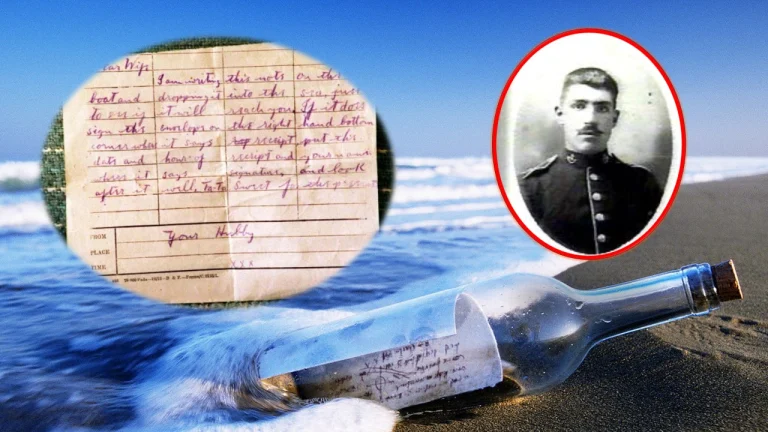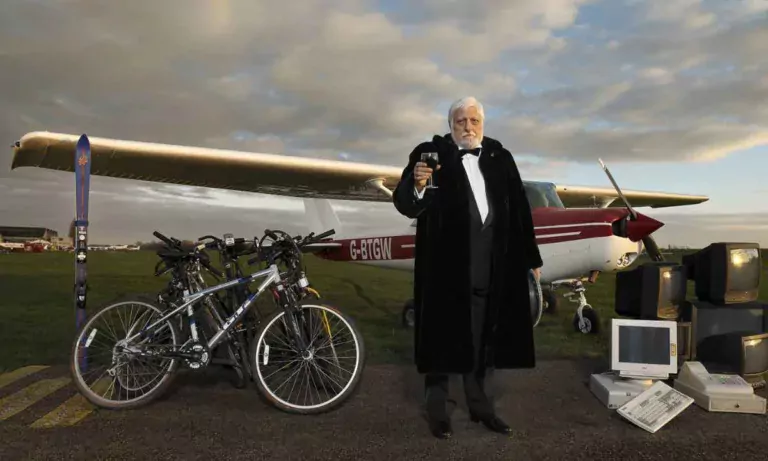A Man Survived In A Snow-covered Car for 2 Months!
Peter Skyllberg who is 44 years old from Sweden, lived through what must be every man’s worst nightmare. He stayed for two months in his car, which was covered by snow, and survived the winter. Found in February 2012 near Umeå, he immediately became an overnight topic all over the world. It started in December 2011 when his car became stranded in a deserted road during heavy snow. Skyllberg got trapped without any food and was unable to move his vehicle. He hardly had any warmth, or the possibility to call for help. As snow piled higher and higher, all he could do was wait for a miracle. Let’s dive into the details of his survival and rescue.
Skyllberg’s Harrowing Experience
Skyllberg’s regular drive became dangerous as snowfall was heavy. Soon after, he realized that his car got stuck and within some hours, the snow buried his vehicle completely. With no food and in freezing weather, Peter used his instincts to survive inside the cold car.

Since Skyllberg didn’t have any water to drink, he ate snow for hydration purposes. This gave him very little nutrition but at least enough to sustain him through the freezing cold weather. He used the little insulation from his car and all the clothes he had to keep himself warm. Snow that fell around him worked somewhat like a blanket, which might have lowered the chance of freezing in such a cold car.



The Science of Survival
Skyllberg’s survival was not just a matter of having a will to survive. It was also quite an amazing biological incident. Generally, a human is unable to survive more than a few weeks without food. However, in this incident, the cold kept his body in good shape. His body went into near-hibernation due to the weather conditions, and as the metabolism slowed down, this directly helped him exist longer without food inside the frozen car.

The snow outside his car was very important, as it helped to keep some of his body heat inside the car, preventing hypothermia and allowing him to survive during his days stuck in a frozen car. The slow-burning fuel from his body fat has kept him alive.
“This man obviously had good clothes; he’s had a sleeping bag and he’s been in a car that’s been snowed over, Igloos usually have a temperature of a couple of degrees below 0C and if you have good clothes you would survive in those temperatures and be able to preserve your body temperature. Obviously he has managed to preserve his body temperature or he wouldn’t have made it because us humans can’t really stand being cooled down like reptiles, for instance, which can change the body temperature.”
“Two months was at the “upper limit” of what a person would be able to survive without food”
Dr Ulf Segerberg, the chief medical officer at Noorland’s University Hospital
The Moment of Rescue
After almost 60 days, two people riding snowmobiles across the woods saw the car. They found Skyllberg weak and very hungry inside the car but surprisingly still alive. It came as a shock to the medical teams to see him in this cold car for that length of time. They rushed him into emergency care in a nearby hospital.
“The man was huddled in a sleeping bag on the back seat”
“He was in a very poor state. Poor condition. He said he’d been there for a long time and had survived on a little snow. He said himself he hadn’t eaten anything since December”
Policeman Ebbe Nyberg
Doctors were surprised to discover that though Skyllberg was a very weak man, his vital organs were all stable. He was surprising because his body could adapt to extreme conditions. With all the medical attention he received, he regained health slowly. The doctors were now curious with his case. Indeed an example of how a man survived in a frozen car.
“It’s just incredible that he’s alive considering that he had no food, but also since it’s been really cold for some time after Christmas.
A rescuer told the local newspaper Västerbottens-Kuriren
Global Reactions
News of Skyllberg’s survival spread like wildfire and reached the attention of several media outlets across the globe. Survival experts note his experience and claim that his prowess in preserving snow for food and the insulation of the car provided him the chance to survive. However, this news also caused some surprise as to why it took so long to find him.
Skyllberg’s story led to discussions about how to survive and the strength of the human body. Many people asked how he could stay hopeful even when his situation seemed so bad. His calm attitude and slow recovery after such a long time became an inspiration for many. This shows how a man can survive stuck in a frozen car.
Medical Insights and Future Implications
Skyllberg’s survival increased knowledge of how very cold temperatures act upon the human body. His case provided new insight into how long a person can exist without food in cold places. In fact, the medical world took into view something that helped him stay alive. That is how snow can keep the heat in, throttle down energy usage within the body, and cold can even preserve body tissues. All that put together is a really unbelievable story.
“Skyllberg may have survived by going into hibernation mode. A bit like a bear that hibernates. Humans can do that. He probably had a body temperature of around 31C which the body adjusted to. Due to the low temperature, not much energy was used up”
Doctor, Stefan Branth
“We can’t lower body temperature very much. A little bit we can, but if we lower body temperatures more than just a little bit, we lose consciousness and go into a coma”
Dr Ulf Segerberg said he was “sceptical” of the suggestion/ view of Doctor, Stefan Branth
Still, the use of ultra-low temperatures for preserving the human body in case of a medical emergency or during some operations is under research by scientists. Skyllberg’s survival can have great implications for future medicine and human endurance in life-threatening situations depending on how this man survived in that freezing car.
“There have been cases of people caught out in the mountains, and if they can dig themselves down in the snow they are able to survive and be found. But there must be something special in this case”
Segerberg said that, even in a part of the world where sub-zero temperatures and heavy snow are the norm, this case was unusual.
Conclusion
The story of Peter Skyllberg is one of the most unbelievable survival stories in today’s world. He lay cocooned in snow-encased car during the harsh two-month period. He used his instincts and the environment and marvelous ability of his body to see him through. His story shows the ability of the human spirit that is strong and can stand even amidst challenges that are so hard. Today, we remember his case not only for its remarkable medical details but also as a symbol of hope, demonstrating how one man survived in a frozen car.
Also read,











